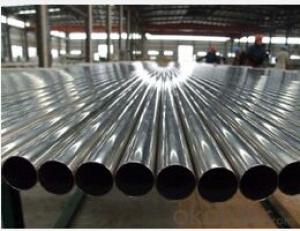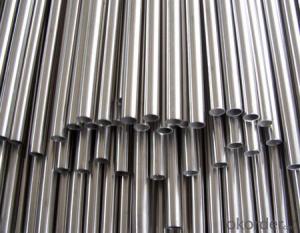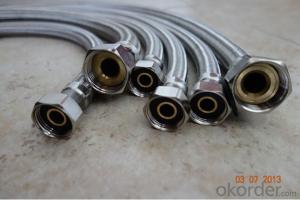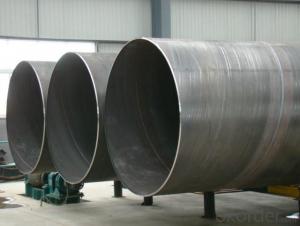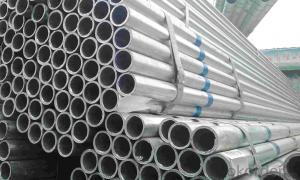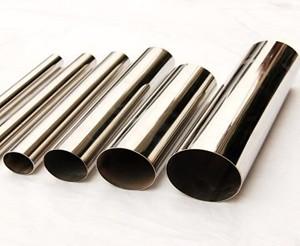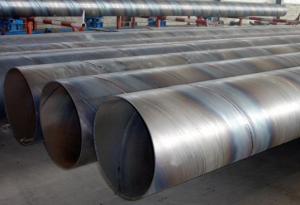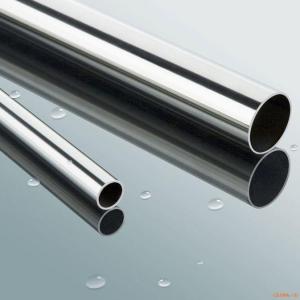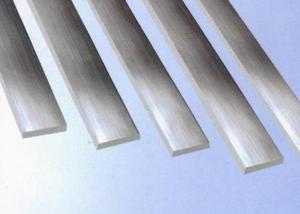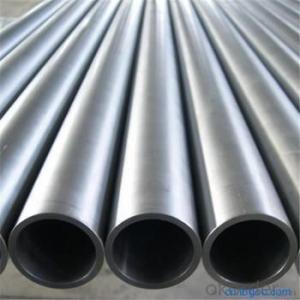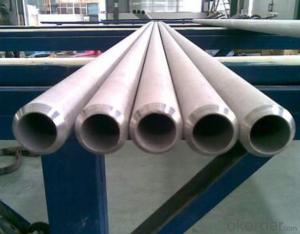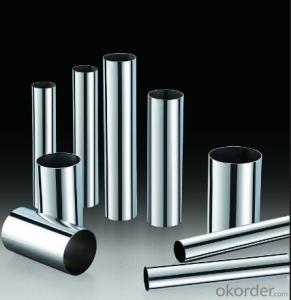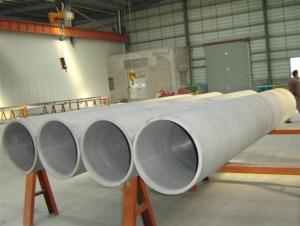Stainless welded Steel Pipe
- Loading Port:
- China Main Port
- Payment Terms:
- TT OR LC
- Min Order Qty:
- -
- Supply Capability:
- -
OKorder Service Pledge
Quality Product, Order Online Tracking, Timely Delivery
OKorder Financial Service
Credit Rating, Credit Services, Credit Purchasing
You Might Also Like
PRODUCT NAME: WELDED STAINLESS STEEL PIPE
| Name | Welded Stainless Steel Pipe |
| Standard | ASTM, GB, JIS, DIN, EN, AISI |
| Material Grade | TP304 TP304L TP316 TP316L TP347 TP347H TP321 TP321H TP310 TP310S |
| TP410 TP410S TP403 | |
| S31803/S32205 S32750 S32760 | |
| Outer Diameter | Welded Pipe: single slit(Φ8mm-Φ630mm); girth(Φ630mm-Φ3000mm), |
| Thickness | Welded Pipe: single slit(0.5mm-25mm); girth(3mm-30mm) |
| Length | Commonly 5.8 Meters or 6.0 Meters, or as customers' request |
| Tolerance | According to the Standard, +/-10% Commonly. |
| Surface | 180#, 320#, 400# Satin / Hairline, Bright Anneal, Pickle,400#, 500#, 600# or 800# Mirror finish |
| Application | Petrochemical industry, chemical fertilizer industry, oil refining industry, oil and gas industry, light industry and food industry, pulp and paper industry, energy and environmental industries. |
| Test | Flaring test, Flattening test, Bending Test, Hydraulic Test, Eddy Current test |
- Q: Can stainless steel pipes be used for underground drainage?
- Certainly! Stainless steel pipes are capable of being used for underground drainage. Stainless steel, a material highly resistant to corrosion and extremely durable, is appropriate for a variety of applications, including underground drainage systems. Its exceptional resistance to rust, corrosion, and chemical damage guarantees a lengthy lifespan and low maintenance requirements. Moreover, stainless steel pipes possess great strength and can endure high-pressure conditions, making them ideal for underground drainage where external load or stress may be encountered. In addition, stainless steel pipes are renowned for their smooth inner surface, which aids in preventing blockages and facilitating the efficient flow of water and waste. All in all, stainless steel pipes are a dependable and enduring option for underground drainage systems.
- Q: Can stainless steel pipes be used for cryogenic applications?
- Yes, stainless steel pipes can be used for cryogenic applications. Stainless steel has excellent low temperature properties, such as good mechanical strength and resistance to embrittlement, making it suitable for handling cryogenic fluids and gases at extremely low temperatures.
- Q: Can stainless steel pipes be used for brewery equipment?
- Yes, stainless steel pipes can definitely be used for brewery equipment. Stainless steel is a preferred material in brewery setups due to its excellent corrosion resistance, durability, and hygienic properties. It can handle the high temperatures, acidic content, and frequent cleaning required in brewery operations, making it a reliable choice for the construction of pipes used in brewing equipment.
- Q: What are the common applications of stainless steel pipes?
- Stainless steel pipes are widely used in various industries due to their exceptional qualities. Some of the common applications of stainless steel pipes are: 1. Plumbing and Water Systems: Stainless steel pipes are commonly used for plumbing and water supply systems due to their corrosion resistance, durability, and ability to withstand high pressure and temperature. 2. Oil and Gas Industry: These pipes are extensively used in the oil and gas industry for the transportation of petroleum products due to their high resistance to corrosion and excellent strength. They can handle extreme temperatures and harsh conditions, making them ideal for offshore drilling and pipeline systems. 3. Food and Beverage Industry: Stainless steel pipes are widely used in the food and beverage industry for the transportation of various liquids and gases. They are preferred due to their hygienic properties, resistance to corrosion, and easy cleaning. These pipes are commonly used in dairy plants, breweries, and food processing units. 4. Pharmaceutical Industry: Stainless steel pipes are crucial in the pharmaceutical industry, where the transportation of chemicals, gases, and liquids must be done in a sterile environment. The corrosion resistance and ability to withstand high temperatures make stainless steel pipes suitable for this industry. 5. Construction and Architecture: Stainless steel pipes find applications in construction and architecture, primarily for structural purposes. They are used for handrails, balustrades, structural supports, and decorative elements due to their aesthetic appeal, durability, and resistance to corrosion. 6. Automotive Industry: Stainless steel pipes are used in the automotive industry for various applications such as exhaust systems, fuel lines, and structural components. The high temperature resistance and durability of stainless steel make it suitable for these demanding applications. 7. Chemical Industry: Stainless steel pipes are extensively used in the chemical industry for the transportation of corrosive chemicals and gases. Their resistance to corrosion and ability to withstand high temperatures make them ideal for chemical processing plants and refineries. 8. Marine Industry: Stainless steel pipes are widely used in the marine industry due to their resistance to corrosion caused by saltwater. They are used in shipbuilding, offshore platforms, and underwater pipelines. Overall, stainless steel pipes have diverse applications in industries where corrosion resistance, high temperature resistance, durability, and hygiene are crucial factors. Their versatility and reliability make them a preferred choice for various industries worldwide.
- Q: What is the hardness of stainless steel pipes?
- The hardness of stainless steel pipes can vary depending on the specific grade and composition of the steel. However, stainless steel pipes are generally known for their high hardness and durability, which makes them suitable for various industrial applications requiring resistance to corrosion, heat, and wear.
- Q: What is the maximum temperature limit for stainless steel pipes?
- The maximum temperature limit for stainless steel pipes depends on the specific grade of stainless steel used. Generally, stainless steel pipes can withstand high temperatures ranging from 1200°F (650°C) to 1600°F (870°C). However, it is crucial to consider the specific alloy composition, as some grades of stainless steel have higher temperature resistance than others. Additionally, factors such as the duration of exposure to high temperatures and the presence of corrosive substances can also affect the maximum temperature limit. Therefore, it is essential to consult the manufacturer's specifications or seek professional advice to determine the exact maximum temperature limit for a specific stainless steel pipe application.
- Q: What is the tensile strength of stainless steel pipes?
- The tensile strength of stainless steel pipes can vary depending on the specific grade and composition of the steel. However, stainless steel is known for its high tensile strength, making it a popular choice for various applications that require strong and durable pipes. On average, stainless steel pipes have a tensile strength ranging from 500 to 1500 megapascals (MPa). This high tensile strength allows stainless steel pipes to withstand significant pressure and stress, making them suitable for use in industries such as construction, oil and gas, chemical processing, and automotive manufacturing. It is important to note that the exact tensile strength of stainless steel pipes can be influenced by factors such as the manufacturing process, heat treatment, and any additional alloying elements present in the steel. Therefore, it is essential to consult the specific technical specifications or standards for the particular grade of stainless steel pipes in order to determine their exact tensile strength.
- Q: What is the difference between Schedule 10 and Schedule 40 stainless steel pipes?
- The main difference between Schedule 10 and Schedule 40 stainless steel pipes lies in their wall thicknesses and pressure ratings. Schedule 10 pipes have thinner walls compared to Schedule 40 pipes. This means that Schedule 10 pipes are suitable for applications that require lower pressure ratings and are generally used for lighter-duty purposes. On the other hand, Schedule 40 pipes have thicker walls, making them suitable for applications that require higher pressure ratings and are often used in heavy-duty or industrial settings. The choice between Schedule 10 and Schedule 40 stainless steel pipes depends on the specific requirements of the application, including the pressure, temperature, and material compatibility.
- Q: Can stainless steel pipes be used for irrigation sprinkler systems?
- Yes, stainless steel pipes can be used for irrigation sprinkler systems. Stainless steel is highly resistant to corrosion and rust, making it a durable choice for outdoor applications like irrigation systems. Additionally, stainless steel pipes have excellent strength and can withstand high-pressure conditions, making them suitable for sprinkler systems.
- Q: Can stainless steel pipes be used for structural applications?
- Stainless steel pipes are indeed applicable for structural purposes. Stainless steel possesses remarkable attributes such as a high strength-to-weight ratio, corrosion resistance, and durability, rendering it a suitable material for an array of structural applications. In construction, infrastructure, and industrial ventures, stainless steel pipes are frequently employed due to their pivotal role in providing strength and preventing corrosion. These pipes find extensive use in buildings, bridges, stadiums, and other structures, where they serve as structural supports, frameworks, and load-bearing components. Furthermore, stainless steel pipes exhibit exceptional structural integrity, enabling them to withstand immense loads, extreme temperatures, and harsh environmental conditions. Consequently, stainless steel pipes emerge as a reliable and dependable choice for any structural application.
Send your message to us
Stainless welded Steel Pipe
- Loading Port:
- China Main Port
- Payment Terms:
- TT OR LC
- Min Order Qty:
- -
- Supply Capability:
- -
OKorder Service Pledge
Quality Product, Order Online Tracking, Timely Delivery
OKorder Financial Service
Credit Rating, Credit Services, Credit Purchasing
Similar products
Hot products
Hot Searches
Related keywords
